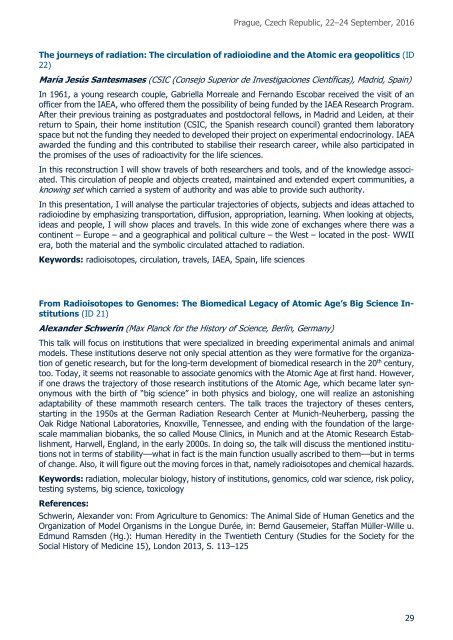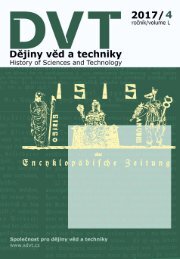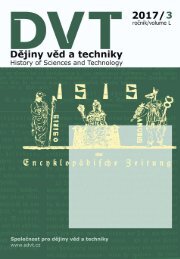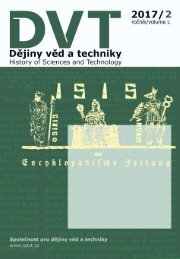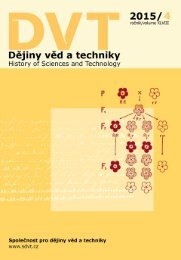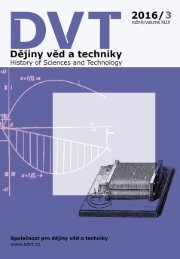7th ESHS Conference Prague 2016
7th Conference of the European Society for the History of Science Book of Abstracts
7th Conference of the European Society for the History of Science
Book of Abstracts
Create successful ePaper yourself
Turn your PDF publications into a flip-book with our unique Google optimized e-Paper software.
<strong>Prague</strong>, Czech Republic, 22–24 September, <strong>2016</strong><br />
The journeys of radiation: The circulation of radioiodine and the Atomic era geopolitics (ID<br />
22)<br />
María Jesús Santesmases (CSIC (Consejo Superior de Investigaciones Científicas), Madrid, Spain)<br />
In 1961, a young research couple, Gabriella Morreale and Fernando Escobar received the visit of an<br />
officer from the IAEA, who offered them the possibility of being funded by the IAEA Research Program.<br />
After their previous training as postgraduates and postdoctoral fellows, in Madrid and Leiden, at their<br />
return to Spain, their home institution (CSIC, the Spanish research council) granted them laboratory<br />
space but not the funding they needed to developed their project on experimental endocrinology. IAEA<br />
awarded the funding and this contributed to stabilise their research career, while also participated in<br />
the promises of the uses of radioactivity for the life sciences.<br />
In this reconstruction I will show travels of both researchers and tools, and of the knowledge associated.<br />
This circulation of people and objects created, maintained and extended expert communities, a<br />
knowing set which carried a system of authority and was able to provide such authority.<br />
In this presentation, I will analyse the particular trajectories of objects, subjects and ideas attached to<br />
radioiodine by emphasizing transportation, diffusion, appropriation, learning. When looking at objects,<br />
ideas and people, I will show places and travels. In this wide zone of exchanges where there was a<br />
continent – Europe – and a geographical and political culture – the West – located in the post‐ WWII<br />
era, both the material and the symbolic circulated attached to radiation.<br />
Keywords: radioisotopes, circulation, travels, IAEA, Spain, life sciences<br />
From Radioisotopes to Genomes: The Biomedical Legacy of Atomic Age’s Big Science Institutions<br />
(ID 21)<br />
Alexander Schwerin (Max Planck for the History of Science, Berlin, Germany)<br />
This talk will focus on institutions that were specialized in breeding experimental animals and animal<br />
models. These institutions deserve not only special attention as they were formative for the organization<br />
of genetic research, but for the long-term development of biomedical research in the 20 th century,<br />
too. Today, it seems not reasonable to associate genomics with the Atomic Age at first hand. However,<br />
if one draws the trajectory of those research institutions of the Atomic Age, which became later synonymous<br />
with the birth of “big science” in both physics and biology, one will realize an astonishing<br />
adaptability of these mammoth research centers. The talk traces the trajectory of theses centers,<br />
starting in the 1950s at the German Radiation Research Center at Munich-Neuherberg, passing the<br />
Oak Ridge National Laboratories, Knoxville, Tennessee, and ending with the foundation of the largescale<br />
mammalian biobanks, the so called Mouse Clinics, in Munich and at the Atomic Research Establishment,<br />
Harwell, England, in the early 2000s. In doing so, the talk will discuss the mentioned institutions<br />
not in terms of stability––what in fact is the main function usually ascribed to them––but in terms<br />
of change. Also, it will figure out the moving forces in that, namely radioisotopes and chemical hazards.<br />
Keywords: radiation, molecular biology, history of institutions, genomics, cold war science, risk policy,<br />
testing systems, big science, toxicology<br />
References:<br />
Schwerin, Alexander von: From Agriculture to Genomics: The Animal Side of Human Genetics and the<br />
Organization of Model Organisms in the Longue Durée, in: Bernd Gausemeier, Staffan Müller-Wille u.<br />
Edmund Ramsden (Hg.): Human Heredity in the Twentieth Century (Studies for the Society for the<br />
Social History of Medicine 15), London 2013, S. 113–125<br />
29


